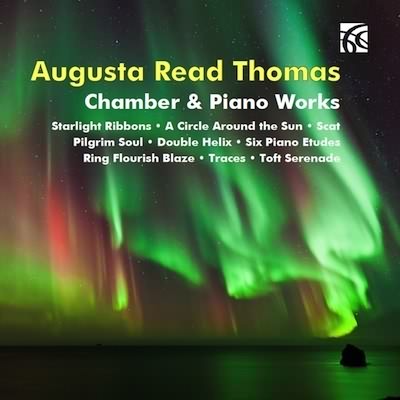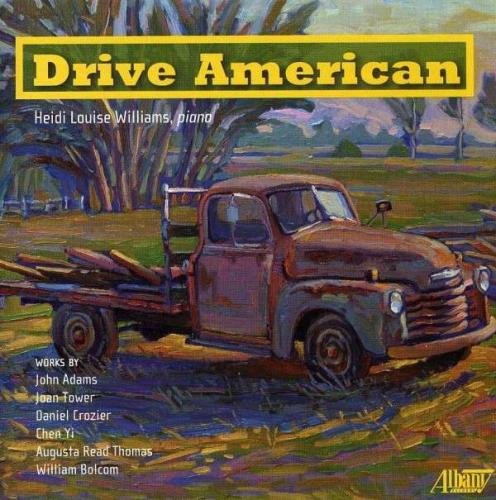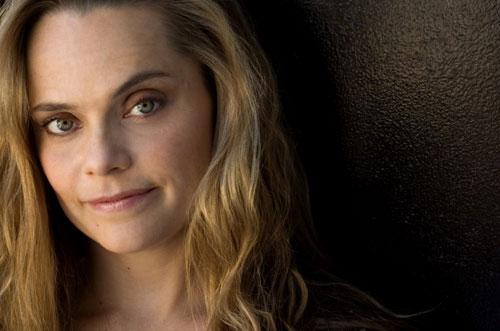Commissioned by the Montalvo Festival for Lang Lang and dedicated to Amy Briggs
Premiered on the Evolution Contemporary Music Series (at An Die Musik)
Duration: 16 minutes
Movement 2
Movement 3

This work is available on
Chamber & Piano Works.

This work is available on
Chamber & Piano Works.

This work is available on
Chamber & Piano Works.
Traces Makiko Hirata, piano
Traces runs from 6:53-7:52
Traces for solo piano, composed in 2006, was commissioned by the Montalvo Festival for Lang Lang. The World Premiere took place on January 26, 2009, in Baltimore, on the Evolution Contemporary Music Series (at An Die Musik), Amy Briggs, pianist.
It is preferred but not required that a pianist would play all five Traces at once.
The idea was to take the distant perfumes of other musical idioms (and it should be noted that there are no quotes of music by other composers in Traces) and to imagine what it would be like to cross-fertilize them.
What would J.S. Bach crossed with BeBop sound like?
How would Scarlatti's Baroque Ornamentation crossed with Art Tatum sound?
These works took me countless months to compose.
They were fun, challenging and exhilarating to create.
I composed them at a piano, note by note, playing the music at a super slow tempo over and over again.
Traces is dedicated to Amy Briggs. (Impromptu is an expansion of my Piano Etude #6 and Piano Etude #6 was not commissioned by anyone, rather composed on my own initiative.)
I: Reverie
Like Robert Schumann (The Poet Speaks) crossed with George Crumb
1 minute 30 seconds
II: Caprice
Like Scarlatti's Baroque Ornamentation crossed with Art Tatum
2 minutes 30 seconds
III: Tango
Like Astor Piazzola crossed with John Coltrane
3 minutes
IV: Impromptu
Like Stravinsky crossed with Chopin and Thelonious Monk
5 minutes
V: Toccata
Like J.S. Bach crossed with BeBop
2 minutes 30 seconds
Although my music is highly notated, precise, carefully structured, thoughtfully proportioned, and so forth... and although the pianist is playing from the very specific text, I like my music to have the feeling that it is organically being self-propelled — on the spot. As if we listeners, the audience, are overhearing a CAPTURED IMPROVISATION.
I like my music to be played so that the "inner-life" of the different rhythmic syntaxes is specific, with characterized phrasing of the colors and harmonies, etc. — keeping it ultra alive — such that it always sounds spontaneous. For their sublime precision and technical mastery, I deeply thank pianists who play my notations in this way.
My works are organic and, at every level, concerned with transformations and connections.
— Augusta Read Thomas

Program Note from the Nimbus CD (Nimbus Alliance NI 6258)
Eleven years separate her Six Piano Etudes from her Traces, and the later work finds Thomas's dialogue with the past becoming subtler, more multi-faceted and elusively shaded. We are no longer dealing with straightforward homages to composers past and present, but with pianistic flights of fancy crossing what one might initially think of as contrasting perfumes, mainly placing the spirits of mainstream composer vis-à-vis comparable figures from the world of jazz. Such an approach unsurprisingly provides uncommonly rich grist to Thomas' compositional mill, whether it's Art Tatum channeling his inner baroqueness via Scarlatti (with, just maybe, the ghost of Vladimir Horowitz nervously hovering between the two, for Tatum was reputed to be the only pianist who could give this greatest of Scarlattians many a sleepless night!); or Astor Piazzolla locking horns with John Coltrane in a punchier-than-usual Tango; or Thelonious Monk colluding with Chopin to come up with a fluidly capricious Impromptu; or Schumann's poet gently communing with George Crumb as the latter plucks isolated notes inside the piano, to say nothing of Bach letting rip with a BeBop Toccata. A heady brew in all instances, but there's no mistaking the end result as anything other than Thomas through and through.
— Paul Pellay
Radu A. Lelutiu, Fanfare Magazine "These musical riddles will certainly capture your attention."
Michael Cameron, Fanfare Magazine"The five movements of Augusta Read Thomas's splendid Traces crossbreeds the styles of past composers with aspects of 20th-century music, most often in the jazz idiom. "Caprices" combines Scarlatti with Art Tatum, an unlikely duo if ever there was one. In Thomas's hands the heady brew bubbles and sizzles in every bar, and Williams manages to make the craggy rhetoric sound fresh and spontaneous."
Peter Burwasser, Fanfare Magazine"Augusta Read Thomas has written a clever pastiche of cross-influences, five short pieces that ponder such encounters as "like Stravinsky crossed with Chopin and Thelonious Monk." Of course, her own influence is equally important, essential in a basic sense, as she brings a refined humor and wise insight to the work of musicians she obviously loves. The whole thing kind of sounds like music heard in a dream, and then quickly jotted down in the composer's earliest waking moments."
Greg La Traille, ArkivMusic.com "Augusta Read Thomas's five-movement suite titled Traces (composed in 2007) is most enjoyable and quite clever, such as REVERIE, subtitled Like Robert Schumann (The Poet Speaks) crossed with George Crumb. That is exactly what you get. A tiny, gentle, quite, minimalist and fragmented essence of Schumann's poetic piece. The second piece, CAPRICE — Like Scarlatti's Baroque Ornamentation crossed with Art Tatum, attempts to combine these elements. The other titles are TANGO — Like Astor Piazolla crossed with John Coltrane, IMPROMPTU — Like Stravinsky crossed with Chopin and Thelonious Monk and TOCCATA — Like J.S. Bach crossed with BeBop. This music is not however witty or light, nor does it cleverly shift from one obvious stylistic allusion to another. Instead, it is written and played throughout with a seriously straight face."
Allan Kozinn, The New York Times
Festival Has Familiar Faces, if Not Always Music, for an Anniversary (www.nytimes.com)
"Augusta Read Thomas's Traces (2006), another solo piano work, imagines an intertwining of specific classical and jazz influences: "Like Astor Piazzolla Crossed With John Coltrane," one descriptive subtitle reads. Others suggested hybrids of Chopin and Thelonious Monk, or Bach and bebop. Makiko Hirata's performance highlighted the points of contact nicely, bringing out, for example, a Chopin-esque melody line that Ms. Thomas hid within Monk-like harmonies and rhythms, and letting a Bachian theme swing without straying into Swingle Singers territory."

Bettina A. Norton, The Boston Musical Intelligencer
Ozawa Hall Concerts Score Again
(classical-scene.com/2010/08/03/ozawa-hall/)
"Sunday morning's concert [at Tanglewood Music Center] was too long. But it would have been a sorry day indeed if we had missed Makiko Hirata playing Augusta Read Thomas's Traces. An incredible work, it took the composer "countless months to compose." But the result is an exhilarating musical treat."
"She used idioms from Schumann and Crumb in one, Scarlatti and Art Tatum in another, then Piazzola with John Coltrane, Chopin and Thelonius Monk, Bach with BeBop. Music has its implicit history of other music behind it; but Thomas not only explicitly honors that but also adds a significant nod to today's popular music culture."
"Makiko Hirata was a superb choice to perform this piece: technique to burn, estimably simpatico with the music, lithe fingering and superb understanding of the various idioms. Plus, she has just enough drama with her presentation to assure a rapt audience, all of which, sure enough, produced a standing ovation and cheers."
Mary Wallace Davidson, The Boston Musical Intelligencer
Ozawa Hall Concerts Score Again (classical-scene.com/2010/08/16/tfcm-three/)
"Augusta Read Thomas's Traces for solo piano (2006), previously reviewed (above). Pianist Makiko Hirata has a well-advanced technique and also the ability to represent the music dramatically without exaggeration; and the performance was warmly applauded by the large, attentive audience."
Matthew Guerrieri, The Boston Globe
Contemporary pieces from wondrous to 'Wild'
"Augusta Read Thomas's Traces, played by pianist Makiko Hirata with fizzy confidence, specified its influences, mixing particular jazz and classical composers."
Tim Smith, The Baltimore Sun
Amy Briggs brilliant in tough American piano music
Amy Briggs, Evolution Contemporary Music Series at An Die Musik
"In the space of about two hours last night, pianist Amy Briggs dove into the daunting field of modern American music -- and demonstrated the diverse richness of that repertoire in brilliant fashion.
"Her concert, a presentation of the Evolution Contemporary Music Series at An die Musik, included a couple of premieres. Traces, by Augusta Read Thomas, is a series of stylistic fusions, suggesting what would happen if you crossed Scarlatti with Art Tatum, or Bach with BeBop. Briggs made a strong cases for these imaginative, often thorny keyboard etudes, especially the austere beauty of Reverie (a supposed mesh of Schumann and George Crumb) and the intense, vibrant complexity of Impromptu (Stravinksy and Chopin meet Thelonius Monk)."
To obtain examination or performance material for any of
Augusta Read Thomas's works, please contact G. Schirmer Inc..
